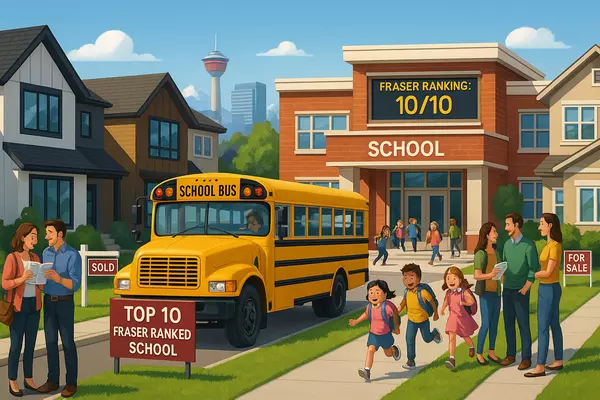Inside Calgary's Hidden Market Forces: What 8 Years of Real Estate Experience Reveals About Home Price Drivers

Inside Calgary's Hidden Market Forces
What 8 Years of Real Estate Experience Reveals About Home Price Drivers

*Names in this blog have been changed for privacy reasons
Last month, I sat across from Jennifer and Mark in my office as they stared at a listing that had jumped $85,000 in price over just six months. "How is this even possible?" Jennifer asked, her voice a mixture of frustration and disbelief. "We've been saving for three years, and it feels like we're moving backward."
In my 8 years helping Calgary families navigate our real estate market, I've watched these conversations become increasingly common. But here's what most people don't realize: there are five specific forces driving these price changes, and understanding them is the difference between making smart moves and getting caught off-guard.
This situation with Jennifer and Mark reminds me of similar conversations I had back in 2017 when Calgary was emerging from the downturn. The difference now? These forces are more complex and interconnected than ever before. Let me take you behind the scenes of what's really happening in our market through the lens of real client experiences and the patterns I've observed over nearly a decade in Calgary real estate.
1. The Population Surge: More Than Statistics
When I started in Calgary real estate in 2017, I handled about 2-3 buyer inquiries per week. Today? I'm fielding 15-20 calls weekly from people who've just moved to Calgary or are planning the move. But the story behind Alberta's rapid population growth isn't just about numbers—it's about families making life-changing decisions.
Take Sarah*, who called me in February after her tech company relocated her from Toronto. "I couldn't believe I could get a 2,000 square foot house in Calgary for what a 600 square foot condo costs in Toronto," she told me. "But by March, those same houses were $60,000 more expensive."
2. The Mortgage Rate Rollercoaster: A Double-Edged Sword
Remember Jennifer and Mark from my opening story? They experienced something I've been warning clients about since 2023: the psychological power of declining mortgage rates. When rates dropped through 2024, it didn't just make homes more affordable—it created urgency and competition that actually drove prices higher.
INSIDER INSIGHT
Every 0.25% rate drop typically increases buying power by about $30,000 on a $500,000 mortgage. When rates fall quickly, this creates instant competition among buyers who simultaneously become more qualified.
3. The Investor Factor: When Investment Meets Competition
Three months ago, I represented Kelly and Ryan in a bidding war for a duplex in Hillhurst. They were competing against two other families and... four different investors. The property sold for $47,000 over asking price to an investment group from Ontario.
4. The Supply Squeeze: Construction Realities vs. Market Demand
Here's a conversation I had last week that perfectly illustrates Calgary's supply challenge. Linda*, a single professional looking to downsize, said, "I want to sell my four-bedroom house in Tuscany and buy a condo downtown. But there are literally only six condos for sale that meet my criteria."
5. The External Money Factor: Understanding Capital Flows
This is perhaps the most misunderstood force in Calgary's market, and it's something I handle delicately with clients. Last month, I worked with the Chens*, a young family where both parents are international students who recently became permanent residents. They brought legitimate savings from their home country to purchase their first Calgary home—part of a larger trend of international capital seeking stability in Canadian real estate.
WHAT I'VE OBSERVED
Certain luxury neighborhoods and specific property types see bidding patterns that don't align with local income levels or traditional financing. These transactions, while representing a small percentage of total sales, can influence broader price expectations.
The JN Strategy: Navigating These Forces Successfully
Back to Jennifer and Mark from my opening story. After explaining these five forces, we developed a strategic approach that acknowledged market realities while maximizing their success potential. Here's what worked:
Market Timing Intelligence
Work with market forces instead of against them. Shift focus when investor activity is high, prepare for quick decisions when inventory is low.
Financial Positioning Strategy
Structure financing to compete effectively with pre-approval optimization and backup plans for different scenarios.
Neighbourhood Selection Methodology
Identify areas where the five forces create opportunities rather than obstacles. Some neighborhoods offer great value with less competition.
Looking Forward: What These Forces Mean for Your Decisions
Jennifer and Mark successfully purchased their home three months later, but not in the neighborhood they originally targeted. By understanding these market forces, we found a better opportunity in an emerging area where investor activity was lower, new supply was planned, and their buying power positioned them competitively.
Categories
Recent Posts











